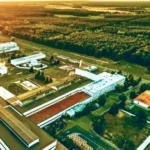The proponents of Datteln 4 claim that this plant will be very modern and clean and emphasize that it will be delivering the necessary „base load”. But actually, to complement fluctuating renewables like solar and wind, we don’t need „base load” but rather highly flexible means of supply, such as turbines running on renewable gas, demand-side management and storage facilities – says Jutta Paulus, a German MEP (Greens/EFA) in an interview with BiznesAlert.pl.
BiznesAlert.pl: How does the start of Datteln 4 power station relate to Germany’s goal to quit coal by 2038?
Jutta Paulus: In my view, it is not reasonable to start a new coal power plant while exiting electricity production from coal in less than 20 years. Especially since there are pending lawsuits against Datteln 4 which was not built according to the administrative decision but much closer to residential buildings and does not comply with all environmental obligations. The operating company claims that it will mothball older coal plants in return, but when doing the math on the actual emissions, the negative impact on Germany’s climate record is obvious.
Supporters of Datteln 4 argue that this project will increase Germany’s energy security. Is it really so, since the last hard coal mine in Germany was closed in 2018 and coal for the Datteln 4 will have to be imported from Russia and other countries?
Exactly. The proponents claim that this plant will be very modern and clean and emphasize that it will be delivering the necessary „base load”. But actually, to complement fluctuating renewables like solar and wind, we don’t need „base load” but rather highly flexible means of supply, such as turbines running on renewable gas, demand-side management and storage facilities. The import of coal just shifts the huge environmental problems that are associated with this to third countries.
While the Datteln 4 power station was started, a low-emission nuclear power station in Philippsburg has been shut down. How does it relate to the goals of Energiewende?
Energy transition means shifting energy use from fossil and nuclear energy carriers to renewables. Therefore, the shutdown of nuclear plants is of course part of it. When it comes to emissions, one should not forget that the substantial emissions from uranium mining, processing and enrichment as well as the production of fuel rods must be counted in, as well as the emissions from dismantling problematic material – not to speak of the incalculable expenditures to handle and store nuclear waste. Up to now, only the cooling towers of Philippsburg were demolished. As I live in pretty close proximity to this plant (40 km), I am glad that this looming risk is finally gone! The technical equipment was built to last for a maximum of 30 years which are nearly used up – and insurance companies will smile at anyone trying to get an insurance policy even for a nuclear power plant built according to modern safety standards.
Interview by Michał Perzyński








